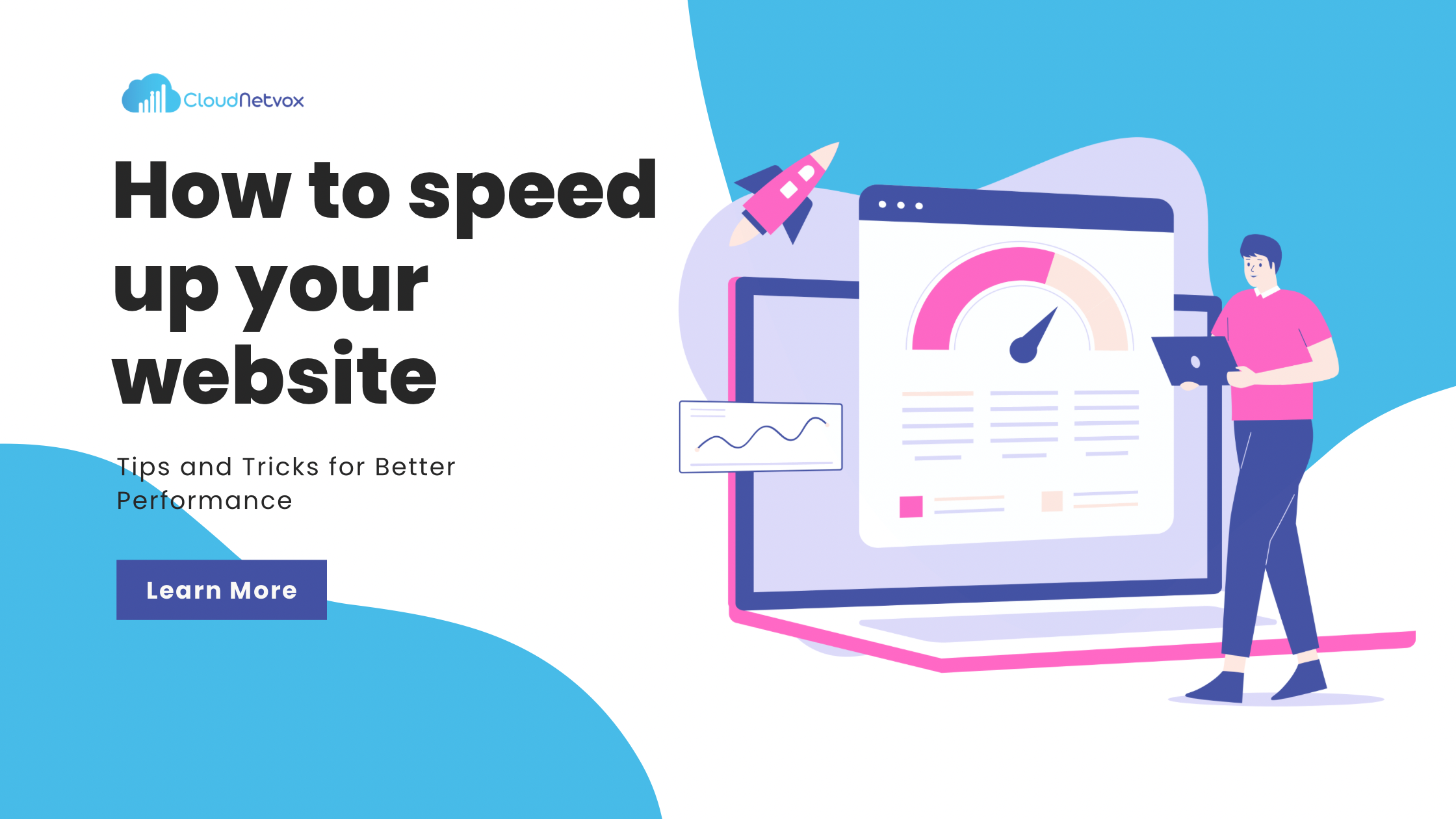How to Speed Up Your Website: Tips and Tricks for Better Performance
 Joan
Joan
I understand how frustrating it can be when your website takes forever to load. Slow websites don't just annoy visitors—they can also hurt your search rankings and conversion rates. But don't worry, we've got your back! Here are some simple tips and tricks to help you speed up your website and keep everything running smoothly.
Start with a Good Web Host
First things first: choose a reliable web hosting provider. At Cloudnetvox, we offer various hosting plans designed to fit your needs. A good host can significantly impact your site's speed, so make sure you're not cutting corners here.
Optimize Your Images
Images are often the biggest culprits for slow loading times. Here’s what you can do:
Resize your images: Make sure your images are no larger than they need to be.
Compress your images: Tools like TinyPNG or JPEG Optimizer can reduce file size without losing quality.
Use the right format: JPEGs for photos, PNGs for graphics with fewer than 16 colors, and SVGs for simple icons.
Enable Browser Caching
Browser caching helps store some parts of your website on a visitor's computer. This way, they don't have to download everything again on their next visit. Most Content Management Systems (CMS) have plugins to enable caching with just a few clicks.
Minify CSS, JavaScript, and HTML
Minifying your files means removing unnecessary spaces, comments, and characters. This can significantly reduce the size of your CSS, JavaScript, and HTML files. There are plenty of online tools to help with this, or you can use plugins if you're using a CMS.
Use a Content Delivery Network (CDN)
A CDN stores copies of your website on servers around the world. When someone visits your site, they're served from the closest server, which speeds up loading times. Cloudnetvox partners with top CDN providers to offer you seamless integration.
Optimize Your CSS and JavaScript
Sometimes, CSS and JavaScript files can block rendering, meaning the page won't load until these files are fully downloaded. Here’s how to fix that:
Load CSS first: Ensure your CSS loads before anything else.
Defer JavaScript: Delay loading JavaScript until after the main content has loaded.
Reduce Redirects
Every time your page redirects to another page, it adds waiting time. Try to minimize the number of redirects to improve your site’s speed.
Use Asynchronous Loading for CSS and JavaScript
Asynchronous loading means files load at the same time rather than one after the other. This can speed up how quickly your page becomes interactive. Look into plugins or coding techniques to help with this.
Regularly Update Plugins and Themes
Outdated plugins and themes can slow down your site. Regular updates ensure you're using the latest, most optimized versions. At Cloudnetvox, we keep our software up-to-date to help you maintain peak performance.
Limit the Use of External Scripts
External scripts, like ads or font loaders, can slow down your website. Only use what’s necessary and try to host these scripts on your own server if possible.
Monitor Your Site’s Performance
Finally, regularly check your website’s performance using tools like Google PageSpeed Insights, GTmetrix, or Pingdom. These tools can provide insights and recommendations for improvements.
Conclusion
Improving your website's speed doesn't have to be a daunting task. By following these simple tips and tricks, you can ensure your site runs faster and more efficiently, keeping your visitors happy and engaged. At Cloudnetvox, we’re always here to help you optimize your site for the best performance. Happy speeding up!
Subscribe to my newsletter
Read articles from Joan directly inside your inbox. Subscribe to the newsletter, and don't miss out.
Written by
